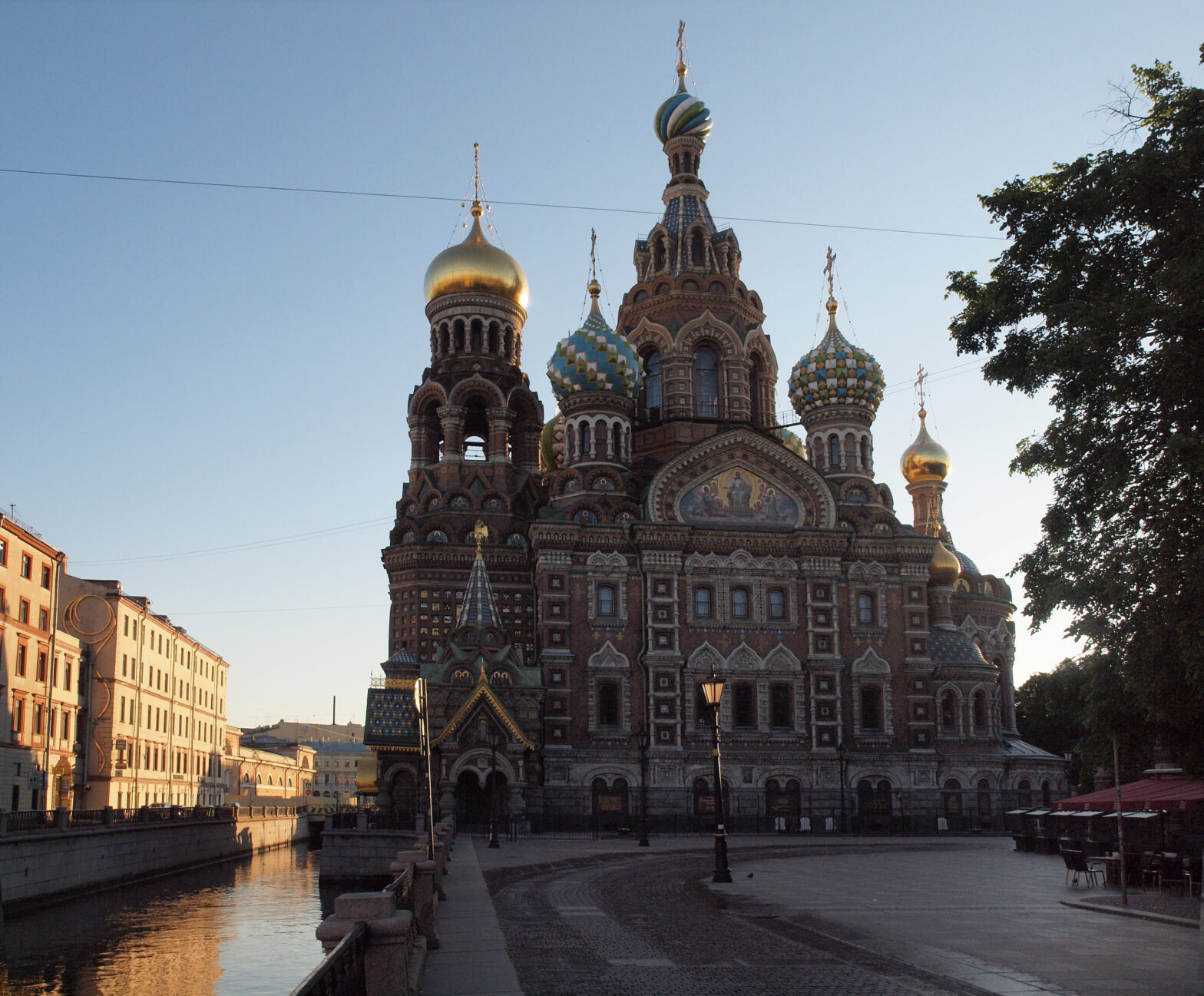The Church of the Saviour on Spilled Blood in St Petersburg was built on the exact spot where the Tsar Alexander II was assassinated in 1881, when political nihilists threw grenades at his carriage as it drove beside the canal. The building was completed in 1907, financed by the Romanov Imperial family as a shrine to the murdered Tsar, but fell into disrepair after 1919 and the Russian Revolution. During the siege of Leningrad the building was used, appropriately enough, as a temporary morgue for those killed in combat or dying from starvation and illness. Restoration of the interior began under the Soviets before the church reopened as a museum in 1997. The extraordinarily beautiful mosaics that cover the whole interior were the work of several leading artists of the day - I illustrate some below. It seemed appropriate to summon up the memory of the shrine at this time of sacrifice and spilled blood, as a way of dealing with the shock of atrocities being committed in Donetsk this week. Thanks to the work of brave and dedicated journalists like Eva Bartlett, we are forced to see the awful carnage that Donetsk's long-suffering citizens cannot avoid seeing, as I show here:
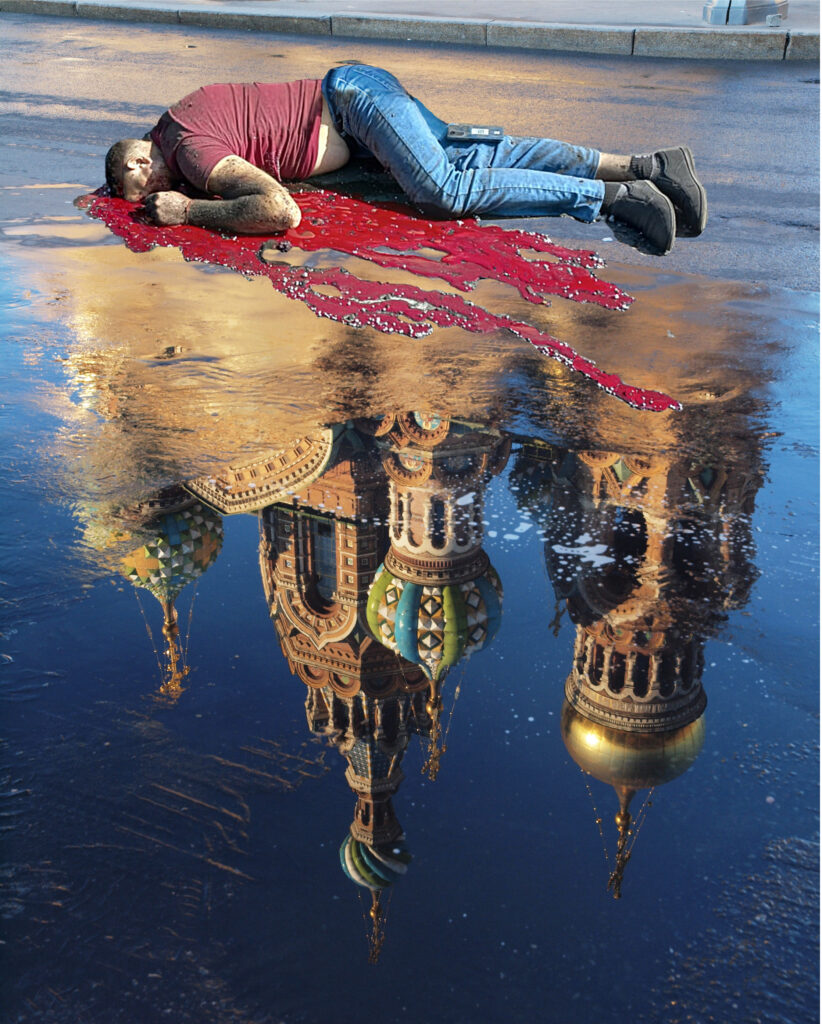
As Eva explains in the video she took, arriving at the scene soon after the shell hit, we are spared the unimaginable sounds and smell of death as mere onlookers, but her video is still very confronting. I’ve taken a still selfie from her video in this combination shot:
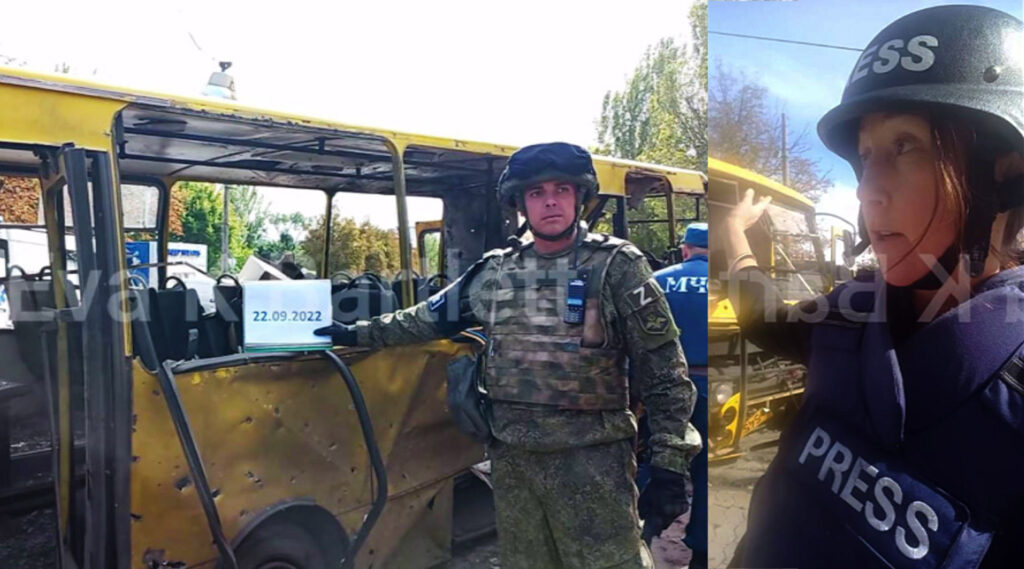
While some of those killed were likely in the bus, this man was felled next to a flower stall, with its symbolic bunch of red carnations. Death it seems is a red affair:
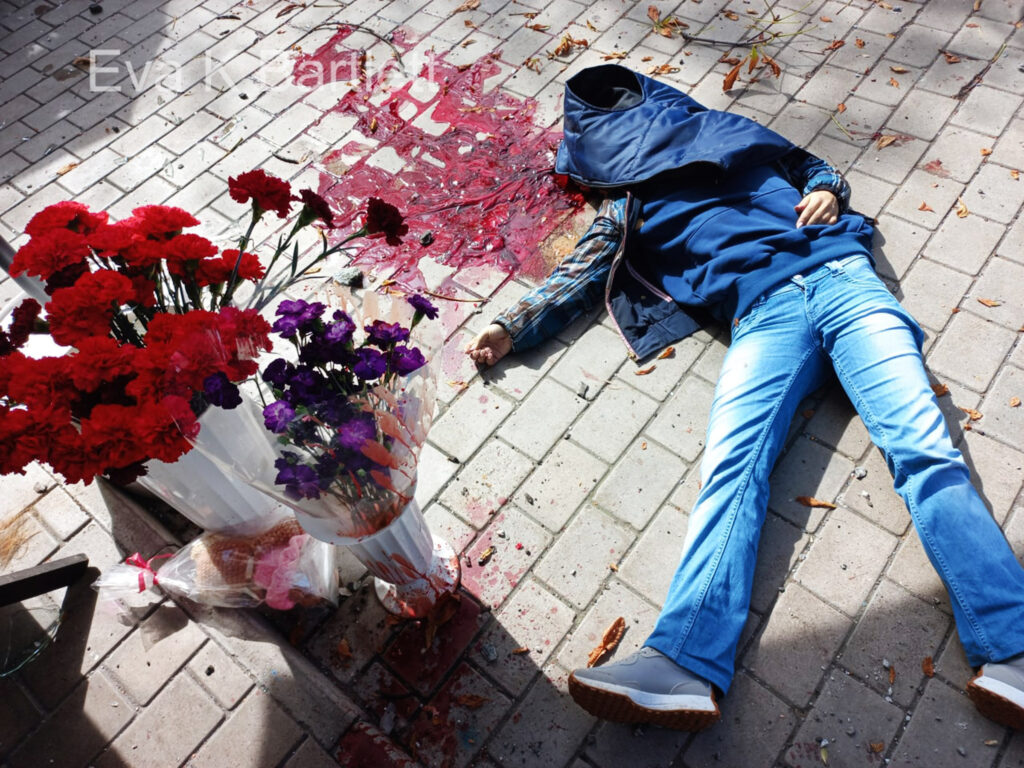
And so the contrast, and symbolism of the white lilies in this mosaic mural from the church of Spilled Blood; the memorial is also dedicated to the resurrection – which we might take to mean the preservation of those things the deceased stood for rather than some sort of mystical rebirth.
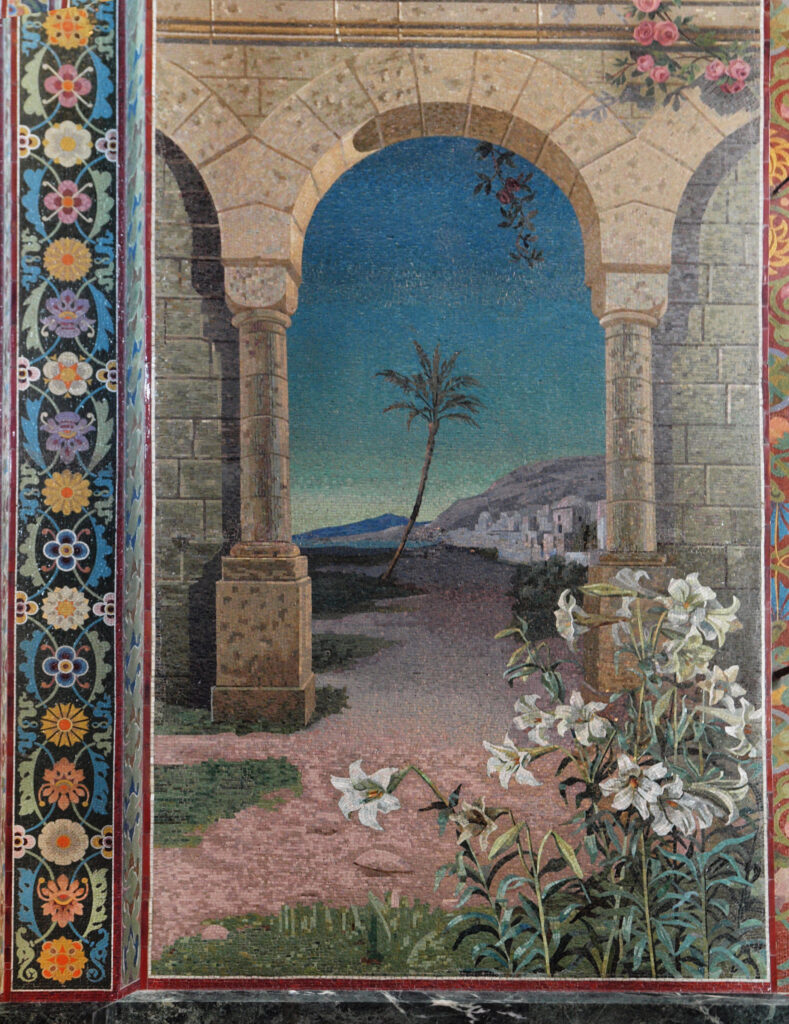
The video Eva took, which I've shortened a little at the start, was filmed live - as it were - recording her reaction and that of others witnessing the atrocity. She has written about the experience here, and before this latest attack. The video is shocking, particularly towards the end, but its impact is not only visual; the sound of a woman crying is hard to listen to:
This cruel and cynical attack on ordinary civilians out shopping in their city on a sunny Autumn morning was no accidental hit, missing some nearby military target, as would be claimed by Ukraine. The same would say that the Russian strikes on "residential areas" or apartment blocks have been intended to kill civilians rather than the Ukrainian military assets using those civilians as human shields. Unlike the Russian army and the local militias they are supporting, the object of that military is vindictive and intended to terrorise the Russian-speaking population of Donbas into leaving, or simply to maim and kill them by degrees. If it's not clear from the style and nature of Kiev's propaganda - for instance on the stories made up about the "heroes of Azovstal" - this following little package of romantic nationalism graphically demonstrates the toxic post-Nazi ideology that has been cultivated and taken root in Ukraine, particularly since the coup in 2014. The actress in this film, Adrianna Kurilets comes from Lviv, home of the Right Sector and Banderite Ukraine. She may be an actress, and her victim an actor, but here she plays herself:
But the more horror and venom is thrown at the people of Donbas, the more sure and determined they become of the path decided back in 2014, when their choice was to succumb to Kiev’s dictates or fight. In doing so they seem to have risen above their loss and even fear, and feel this is a force that will triumph over the forces of evil pitted against them. It is after all the intrinsic message of Christianity – that Christ’s suffering on the cross was to save us poor mortals. This is one of the mosaics on the outside of the Church on Spilled Blood:
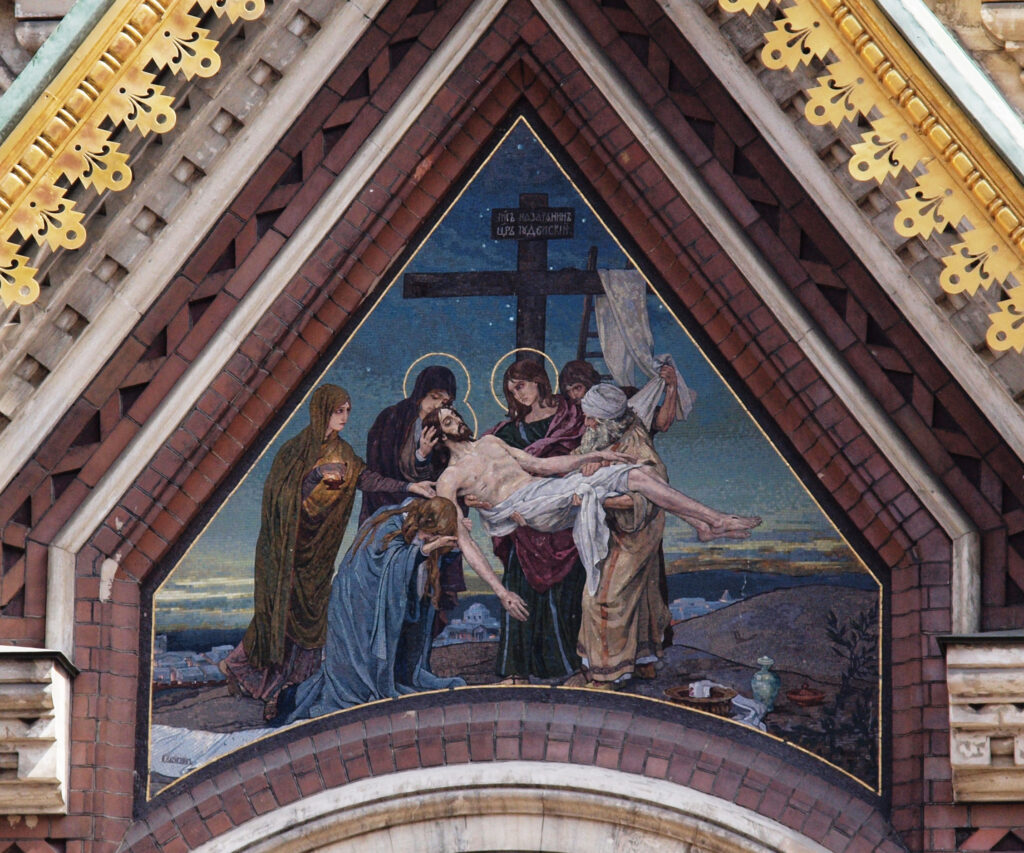
Out of that pain and loss something new can be born, along with the drive and determination to make it live and flourish. A similar mosaic to that above is on the opposite wall of the church seen in my leading illustration, and depicting Christ's resurrection. Even if you don't believe in the supernatural, it's hard not to feel the power of the human spirit in this beautiful creation above the spot where Tsar Alexander's blood was spilled:

And with the referenda now taking place in “Novorossiya” being greeted with overall relief and pleasure, we should keep this vision in mind for the future, discarding ideas of vengeance and retribution and hatred that distinguish our enemies.
DM 27 September 2022
